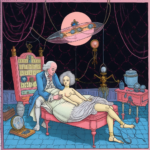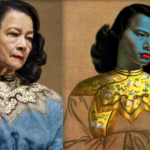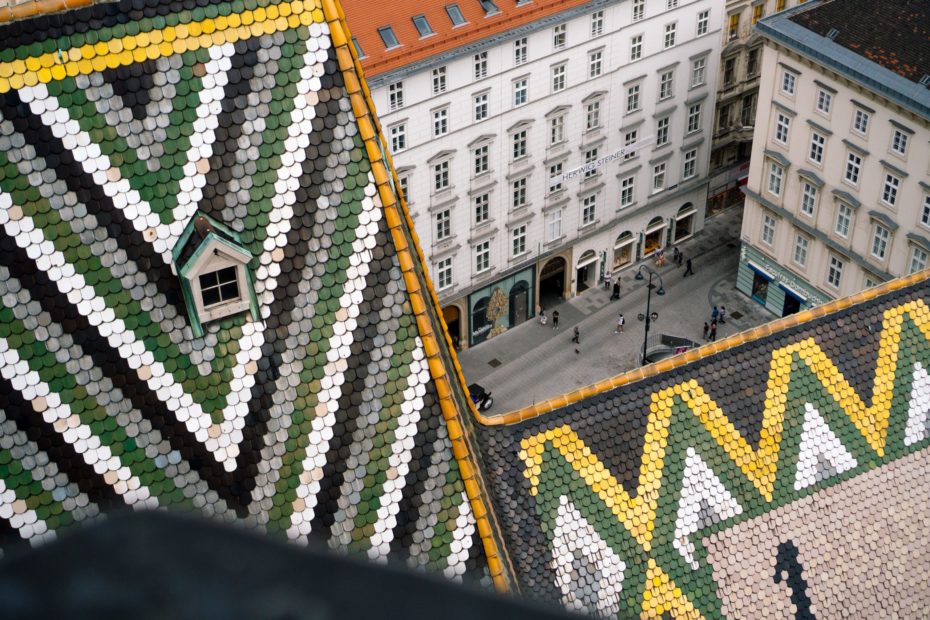
Vienna is rightly regarded as one of Europe’s most elegant capital cities, resplendent with Baroque architecture and built upon centuries of the Imperial grandeur and wealth of the Hapsburg Empire. A city where visitors can spend a weekend marvelling at the Lipizzaner horses performing precise equine ballet at the Spanish Riding School before visiting the homes of Mozart, Haydn and Strauss, and then dropping by one of the grand coffee houses to enjoy the famous Sacher-Torte and other exquisite pastries and cakes.
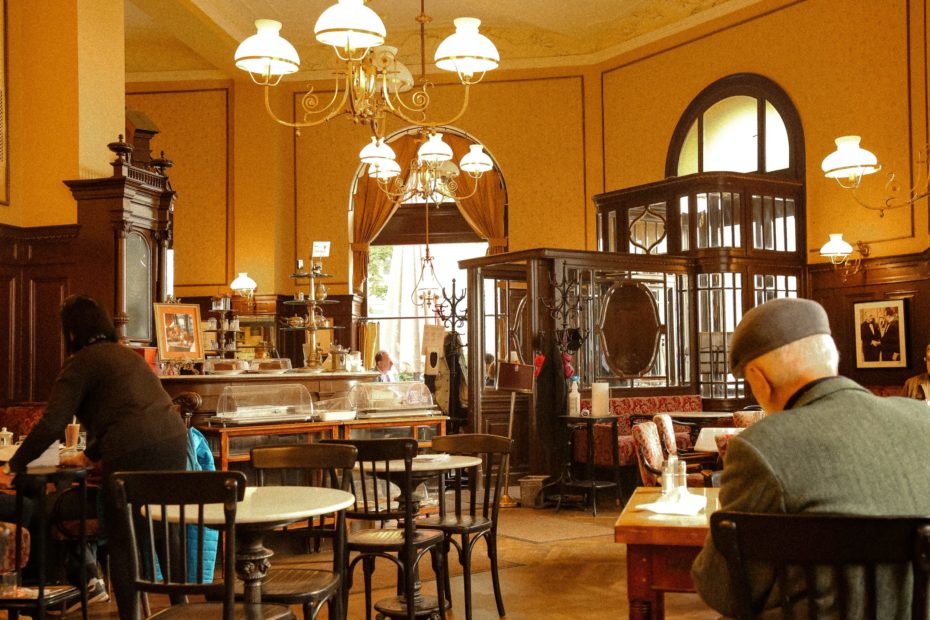
With over four hundred grand balls in the winter alone held in the most beautiful ballroom in the world, the Vienna Opera House, it is known in Vienna as the ‘fifth season’ of the year. Such is the old world luxury and sophistication Vienna, it is possible to spend your trip as their own tourist board puts it, “living the life of 19th century diplomats, French generals and Hungarian aristocrats.”
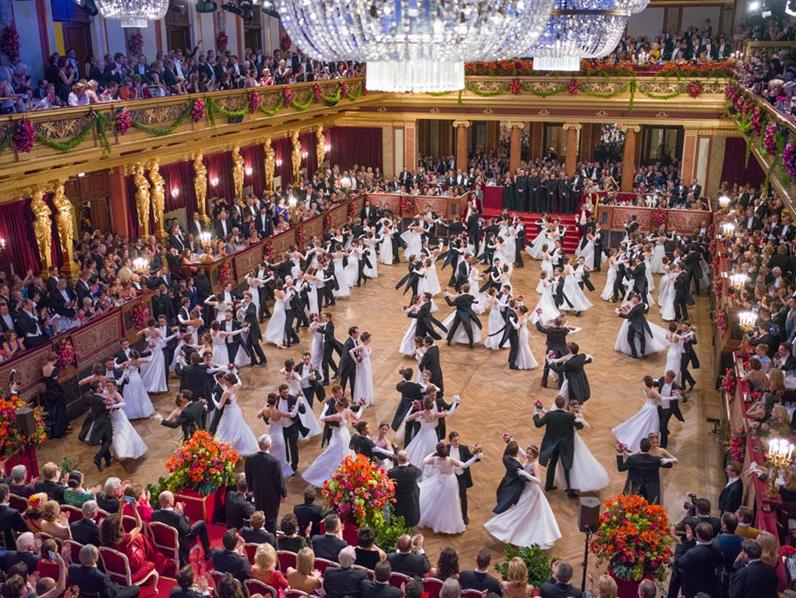
But of course our motto here at Messy Nessy Chic is ‘Don’t Be A Tourist’, preferring to seek out the hidden parts of the city not found in regular guidebooks, and there can be no better way to explore Vienna, than by following in the footsteps of one of the greatest film noirs of all time, The Third Man. So don your fedora at a jaunty angle, turn up the collar of your winter overcoat, strike up the zither music and join us as we plunge headlong into the underworld, alleyways, nightclubs and sewers of post World War II Vienna, on the trail of Orson Welles’ enigmatic gangster, Harry Lime.
The Third Man was released in 1949, a film noir masterpiece from two of the British giants of 20th century writing and film making respectively; Graham Greene and Carol Reed. Voted by the British Film Institute as the greatest British film of all time, The Third Man inhabits a far less elegant Vienna. Shot mostly at night, filled with experimental titled camera angles and harsh shadows, it tells the tale of an American writer of westerns, Holly Martins, played by Joseph Cotten, who arrives in Vienna to accept a job offer from his friend Harry Lime, in one of Orson Welles’ most iconic roles. Martins discovers that Lime had just been killed in a car accident, but the circumstances surrounding his death are highly mysterious. He meets the Chief of British Military Police, who tells Martins that his friend was in fact a deadly black marketeer wanted by the police. Deciding to stay in Vienna to investigate his friend’s death, Martins descends into the criminal underworld and a seedier side of the city. But is Harry Lime really dead?
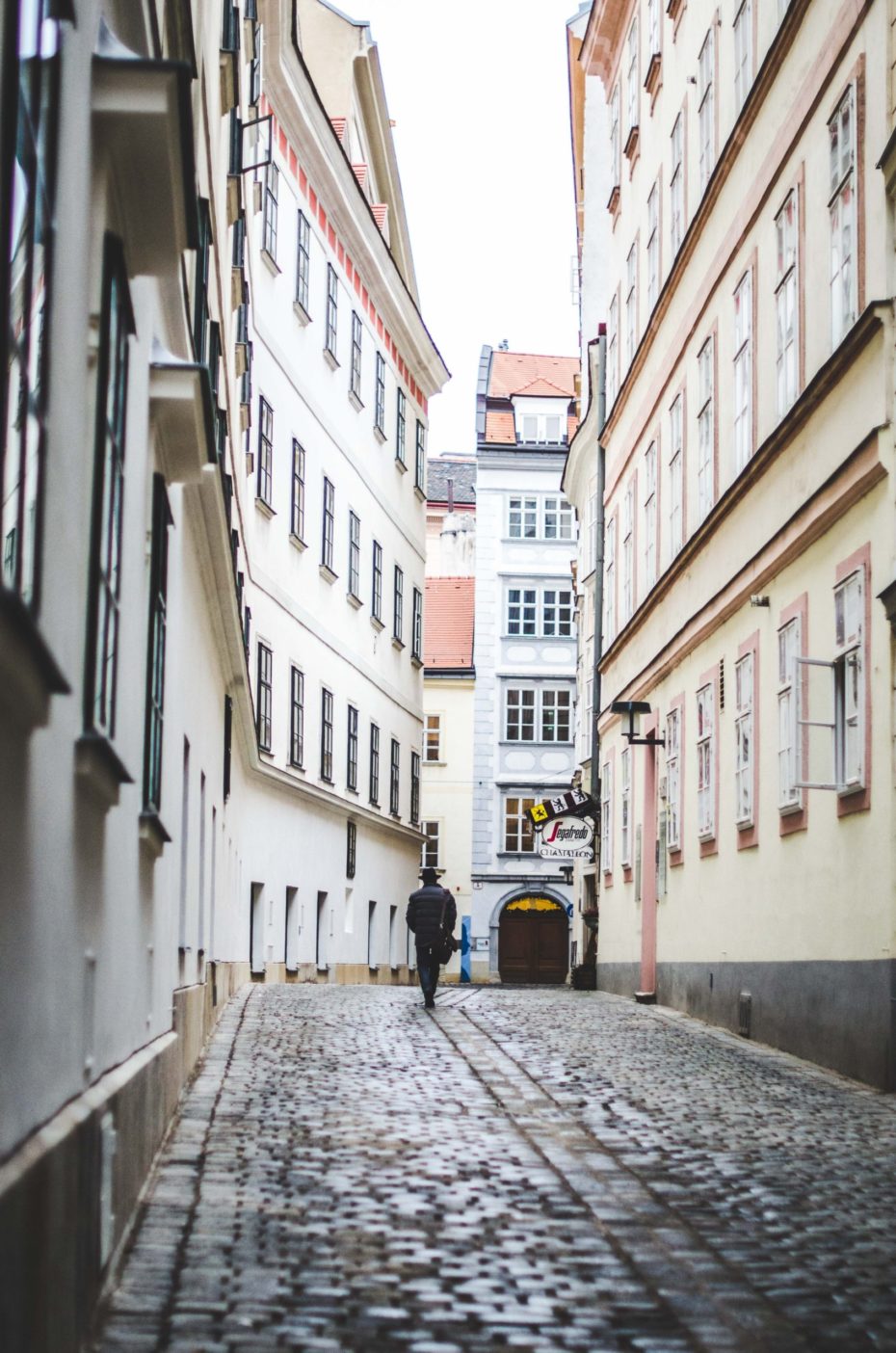
Unusually for the golden age of the studio era, The Third Man was filmed almost entirely on location, in the winter of 1948, taking full advantage of a city still bearing the scars, bullet holes, bomb damage and rubble from the Second World War. As the films narrator explains, “Vienna doesn’t really look any worse than a lot of other European cities. Bombed about a bit.” The city was still divided into four sectors much like Berlin, each run by the Russians, Americans, French and British, who together policed the Innere Stadt, in the curious sight of an army jeep carrying a military policeman from each power. What is incredible is that over seventy years later virtually all the filming locations are still there, looking much as they did when Joseph Cotten explored the city looking for Orson Welles.
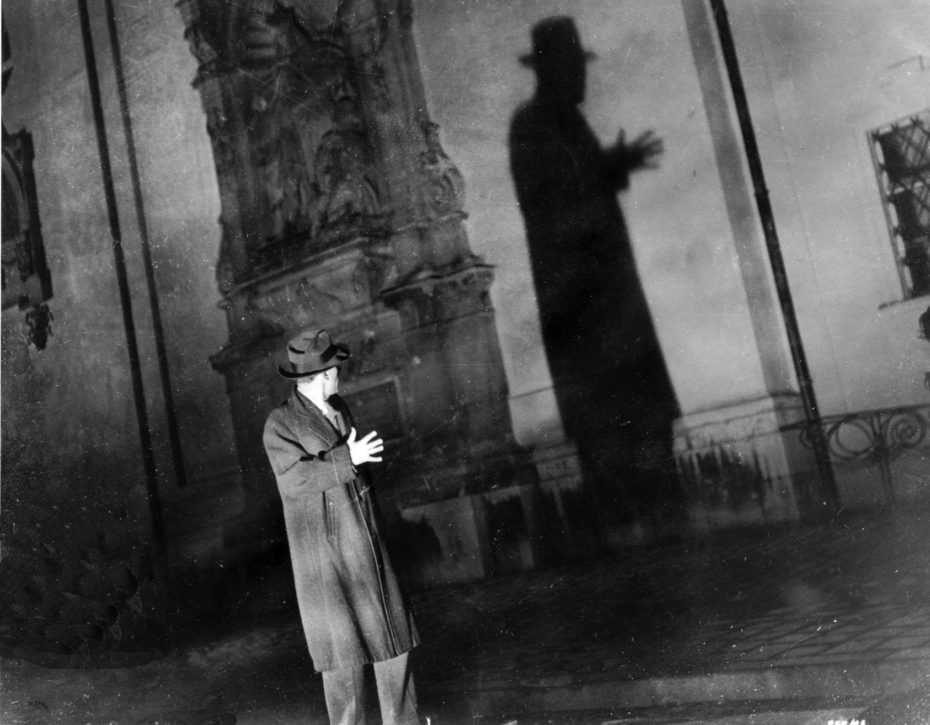
The Third Man started life scribbled on the back of an envelope. Graham Greene recounts how he jotted down an opening sentence: “I had paid my last farewell to Harry a week ago, when his coffin was lowered into the frozen February ground.” As much a travel writer and secret service agent as he was a novelist, Graham Greene set off for Vienna in 1948 to begin meticulous research. He met up with glamorous English actress and socialite, Elizabeth Montagu, the heir to the Beaulieu Estate and direct descendant of Charles II. Together, Greene and Montagu, who had travelled extensively throughout Europe during the war, explored the hidden secrets of post-war Vienna, as she showed him the more disreputable nightclubs, cabarets, even heading down into the sewers that would play a key part in the film’s climactic end.
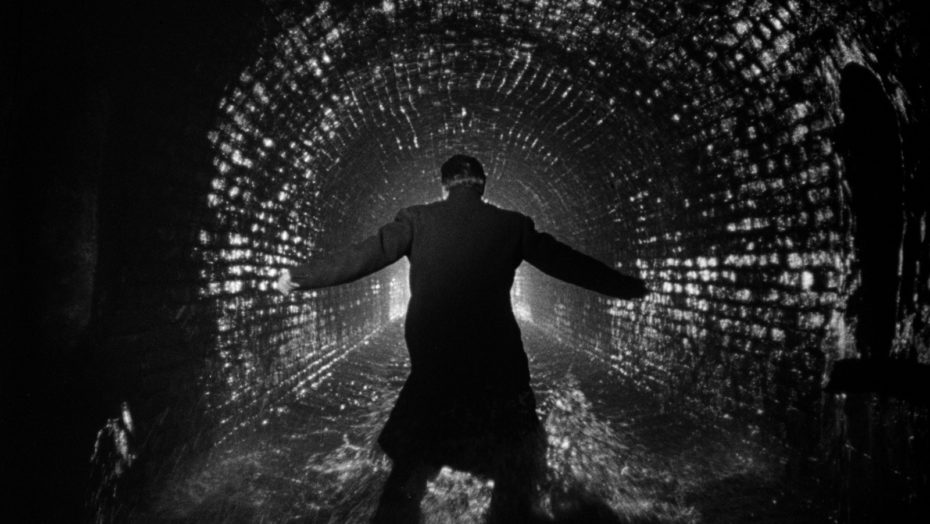
Montagu also introduced Graham Greene to Hans Smolka, a Viennese native and the Central European correspondent for The Times, who was an invaluable source of stories about the black market and criminal underworld in Vienna. But like much of the plot of The Third Man, Smolka was not all he seemed. Having moved to Britain in the 1930s, the journalist became the head of the Russian Section of the Ministry of Information, eventually being awarded an OBE. But Smolka was in fact a Soviet spy, recruited by Kim Philby, who would later be revealed as one of the highest placed and successful Soviet double agents of the Cold War, who also happened to be Greene’s former MI6 supervisor and friend during the writer’s career in espionage. One story that Smolka told to Greene was of a racket of stealing penicillin from Viennese hospitals, watering it down and selling on the black market, which led to a number of deaths and would ultimately provide a key part in the plot of the Third Man.
The Third Man Museum
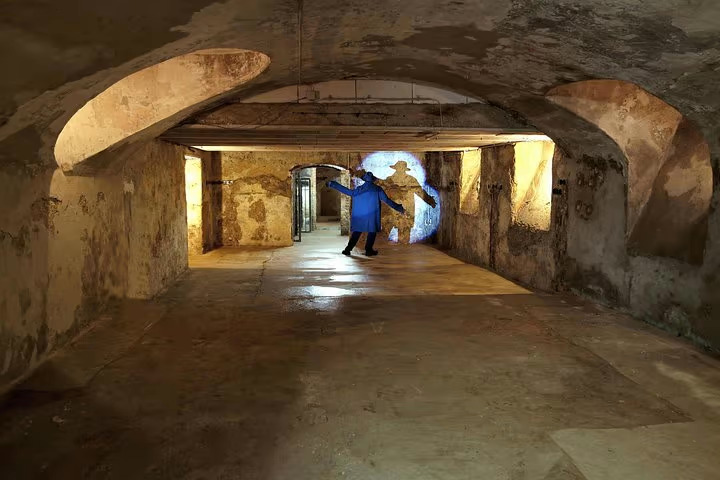
In much the same way Greene sought out local experts, our first port of call in Vienna is the excellent Third Man Museum on Preßgasse, which houses a collection of over 3,000 original artefacts from the film, including over 420 cover versions of Anton Karas’ iconic Third Man theme and original 35mm cameras used for the highly stylised film shoot.
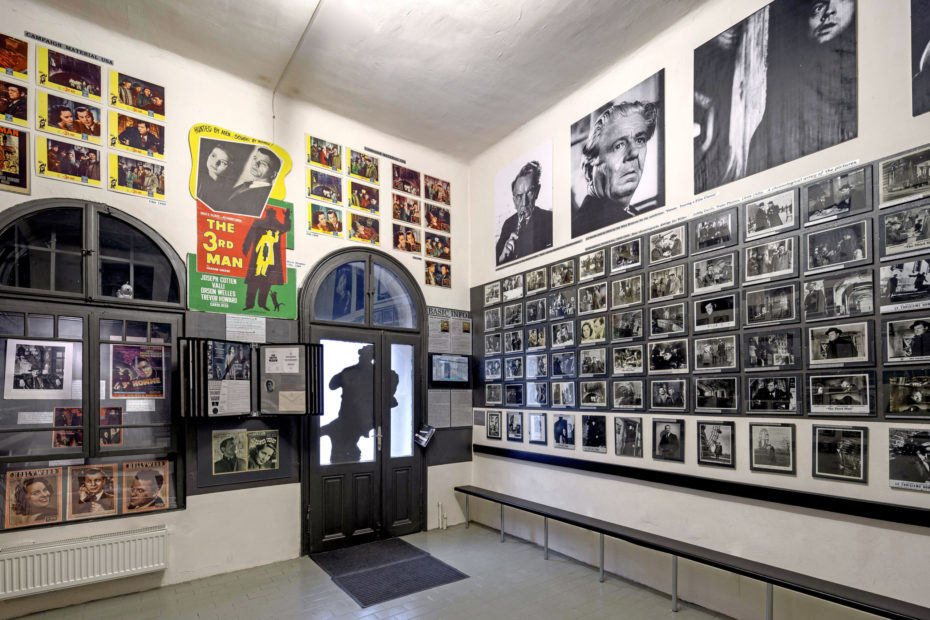
The Third Man Museum is a labour of love for collecting husband and wife team, Gerhard Strassgschwandtner and Karin Höfler. “We both set up the museum completely on our own. I am also a tour guide in Vienna and in the mid 1990s, quite a lot of American and British travellers toured with me. Often they asked me about the movie ‘The Third Man‘ and I had to answer them that this movie in Vienna has no high standing since it did not picture the city nicely,” explains Gerhard. “Because in Vienna and Austria we are not very proud of what happened in the 1930s and 1940s, and so we do not know much about this time and therefor do not learn much of this very important part of our history. My wife Karin said that she only would participate in the museum if I used the movie as a window, a door opener, into a timeframe of Vienna’s recent history.”
Palais Pallavicini (Harry Lime’s Apartment)
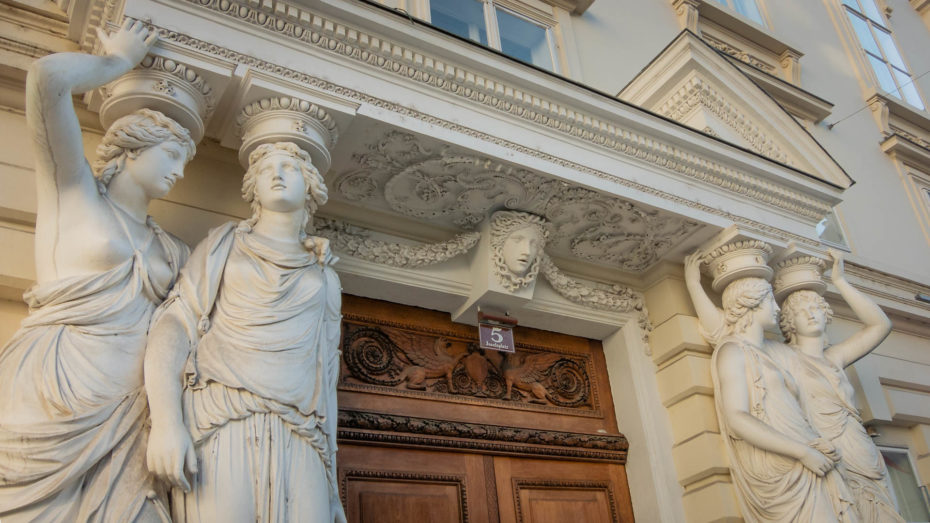
Harry Lime’s apartment is Holly Martins’ first destination in the film. Found at Josefsplatz 5 in the Inner City, it is a fine place to start admiring Vienna’s breath taking architecture, as its not so much an apartment building as a family owned Neoclassical palace. Built in 1784 by Ferdinand Hohenberg von Hetzendorf for the Imperial Count Johann von Fries, the palace is filled with gilded state rooms, salons, chandeliers, a library of 16,000 books and over 300 masterpieces of European painting.
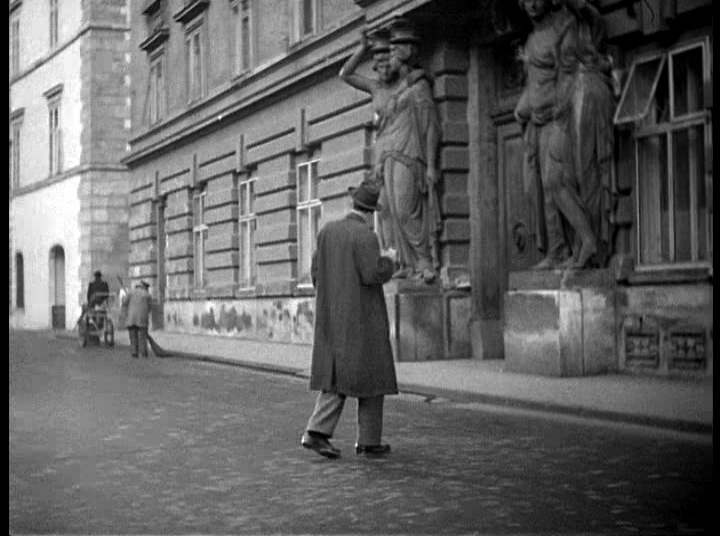
The main entrance is every bit as spectacular – two pairs of giant caryatids, whose graceful female forms were sculpted by Franz Zauner, who also created the famous statue of Emperor Joseph in the square facing the palace. Today owned by the Austro-Hungarian aristocratic Pallavicini family (it’s available to hire for events) and relatively unscarred by the Second World War, it is possible to stand in the same spot as Holly Martins and marvel at the luxurious living accommodations secured by his childhood friend.
Café Mozart
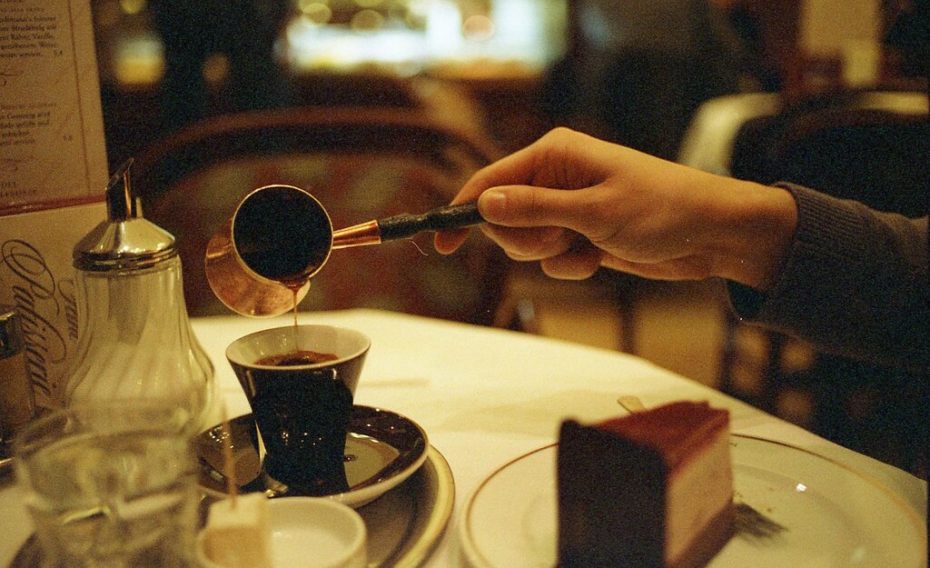
Next door to the Hotel Sacher you will find the Café Mozart, where Graham Greene wrote most of The Third Man. A centre piece of the world famous Viennese coffee house culture for over two centuries, and elegantly decorated with chandeliers, dark wood panelling, and mirrored walls and cosy tables, the Café Mozart is the perfect place for strong Turkish coffee and pastries.
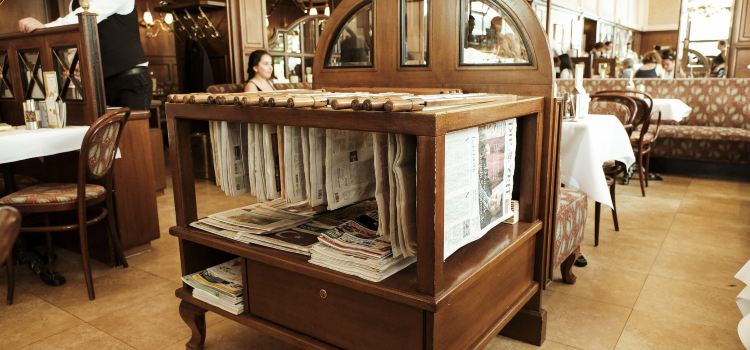
Due to bomb damage, the Café Mozart scene in the film was actually filmed in the outdoor street tables of the ‘Shanigarten’ in the Neuer Markt nearby. It is no co-incidence that many of the key locations that featured in The Third Man are all near each other. As Gerhard at the Third Man Museum explains, “Most of the film locations are in the Inner City. The filming equipment was heavy and the Soviets did not make it easy for the British and American team during the shooting in their sector. So they did not spread out to much; most of the locations still exist.”
Vienna’s Vineyards
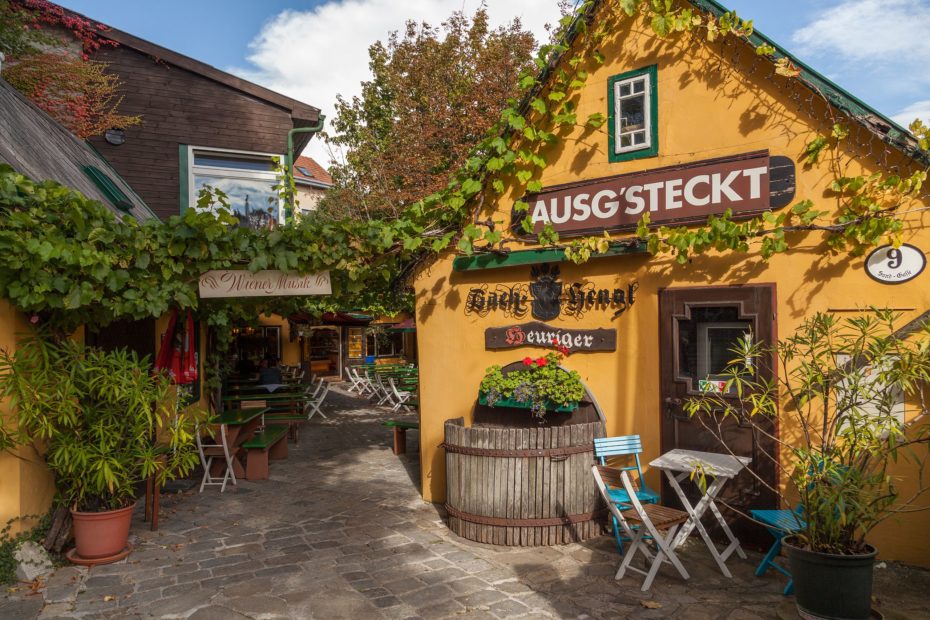
One of the most memorable aspects of The Third Man is the soundtrack, equal parts playful and haunting, and in the museum, you can see the one instrument that features in it: Anton Karas’ zither. In the summer of 1948, the movie’s director, Carol Reed was in Vienna preparing for the shoot. He stopped by a traditional Austrian Heuriger, a rustic wine tavern, where local wine growers will bring their newest wines to sample.
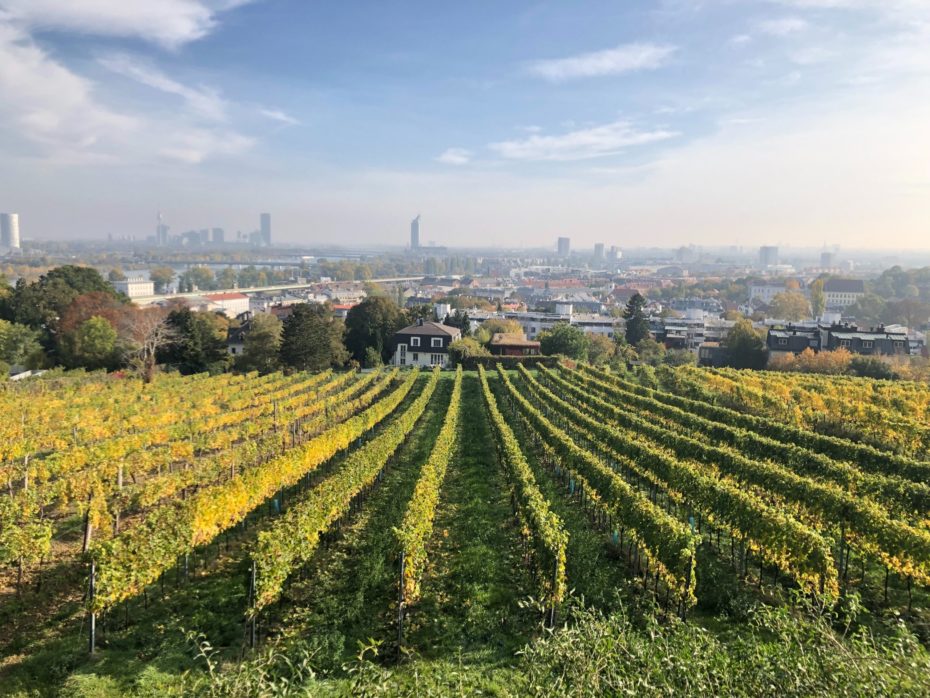
Yes, Vienna has vineyards! Take tram 31 to the last stop, Stammersdorf. Walk down Stammersdorfer Strasse and Strammersdorfer Kellergasse, the main cobblestone alleys with all the taverns. There are many different wine taverns with wine cellars and vineyards in the back gardens, but one we can definitely recommend, is called “Zur Christl” with a buffet style restaurant inside where you can choose from hearty and sweet Austrian dishes and various salads. Upstairs lures a lovely terrace where one’s eye can linger over the vineyards to the churches and skyscrapers of the city in the blurry distance.
Whilst enjoying the local wine, freshly baked bread and hams and cheeses, Carol Reed noticed the unusual sound of a zither being played in the background. Reed was still looking for a theme tune and soundtrack to his film, and “chanced on the tavern in Vienna’s Grinzing wine-growing district,” explains Karas’ obituary, “Struck by the simple zither melodies, Reed asked a stunned Karas if he would compose the music for the film.”
The zither used to compose and play one of film’ most iconic themes, is now proudly on display at The Third Man museum. “The zither is not only one of Anton Karas’ instruments but THE film zither which he used in London for composing the film music and to play the sound into the movie,” explains Gerhard.
Hotel Sacher
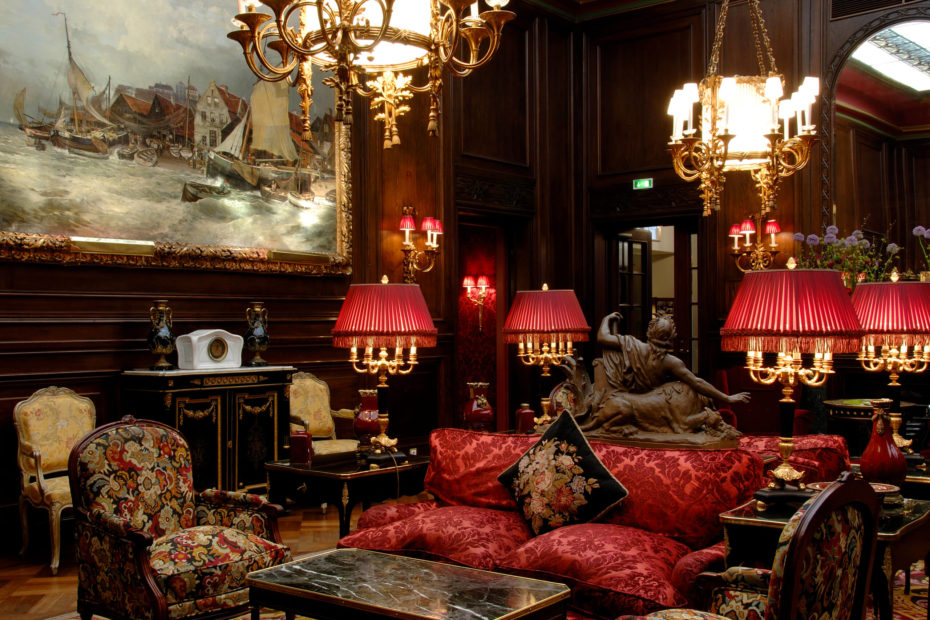
A short five minute walk from Harry Lime’s apartment is the Hotel Sacher, very much HQ for The Third Man. It was here the Graham Greene stayed when researching and writing his novella and screenplay, along with director Carol Reed. In the film, the luxurious five-star hotel was used by the British Military Police as their headquarters, and is where Joseph Cotten’s character stays. Still one of Europe’s grandest hotels, the Sacher opened in 1876 across the street from the Vienna State Opera.
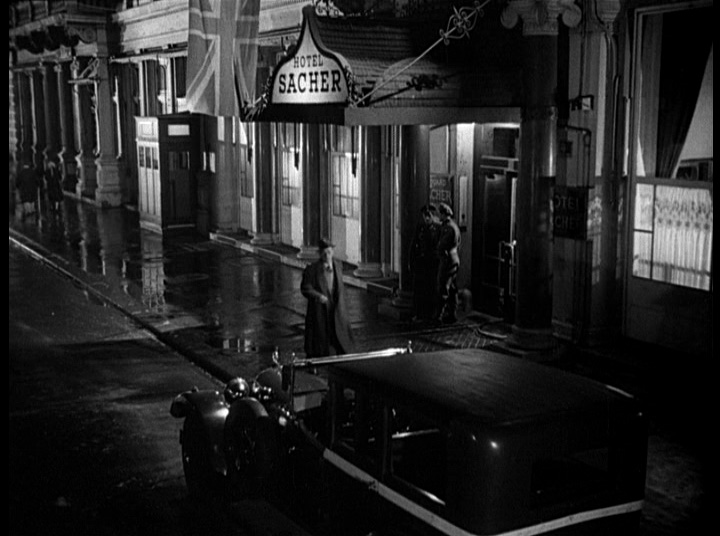
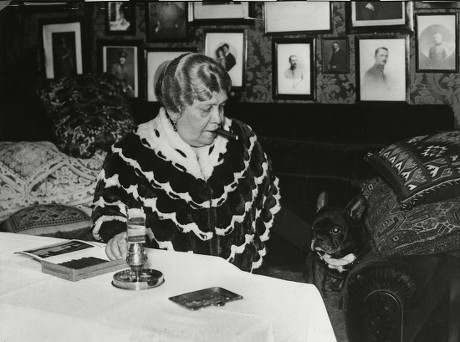
Managed for decades by eccentric hotelier Anna Sacher, who was never seen without her two French bulldogs and a cigar clamped in her mouth, she would often deny rooms to anyone not of aristocratic descent. Today if budgets don’t stretch to staying in the lap of luxury, one should still drop by the Café Sacher Wien, to enjoy one of Vienna’s most famous desserts, the Sacher-Torte. It was created by sixteen year old apprentice Franz Sacher for Prince Metternich of Austria in 1832, when the main hotel chef fell ill and the young apprentice was pressed into coming up with dessert.
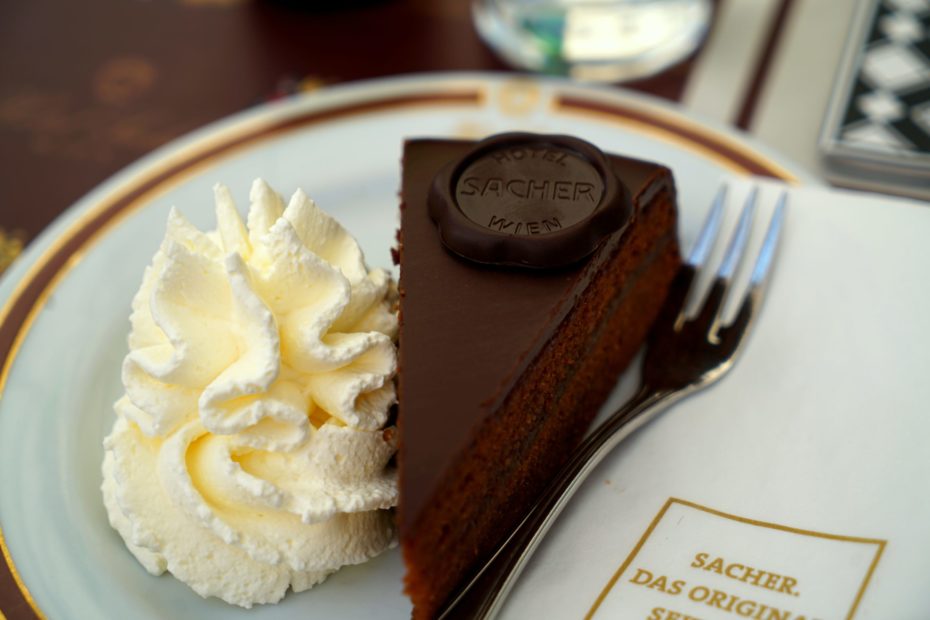
The recipe for the chocolate and apricot cake, served with unsweetened whipped cream is still a closely guarded secret, and a true taste of lost Imperial Vienna.
The Casanova Club
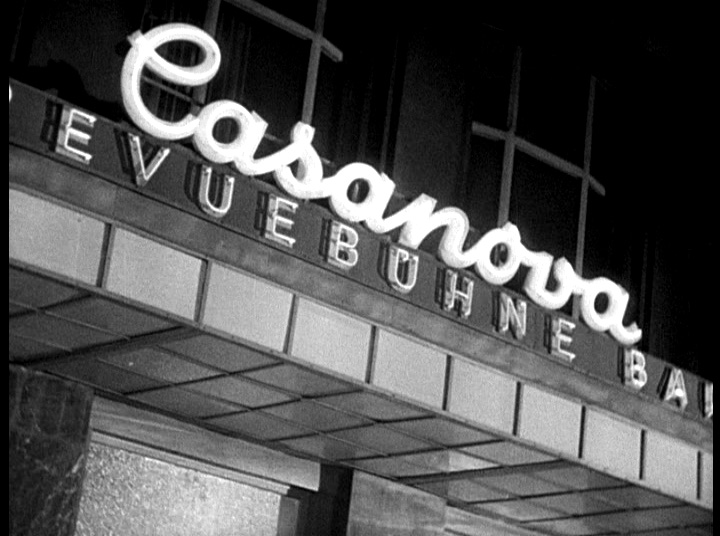
Graham Greene was a connoisseur of bars, and many scenes in his novels take place within the friendly confines of a bar. The Third Man is no exception. Indeed he dedicated his novella ‘To Carol Reed. In admiration and affection and in memory of so many early morning Vienna hours at Maxim’s, the Casanova, the Oriental.’ The Oriental and Maxims are no longer around, but the Casanova Club is still a working cabaret and music club today. The neon lights may have changed, but wander down Dorotheergasse, just a short walk from St. Stephen’s cathedral, and you’ll be following in the footsteps of Joseph Cotten, where he drops by the Casanova to enjoy a drink with Harry Lime’s girlfriend, Anna Schmidt.
Harry Lime Doorway
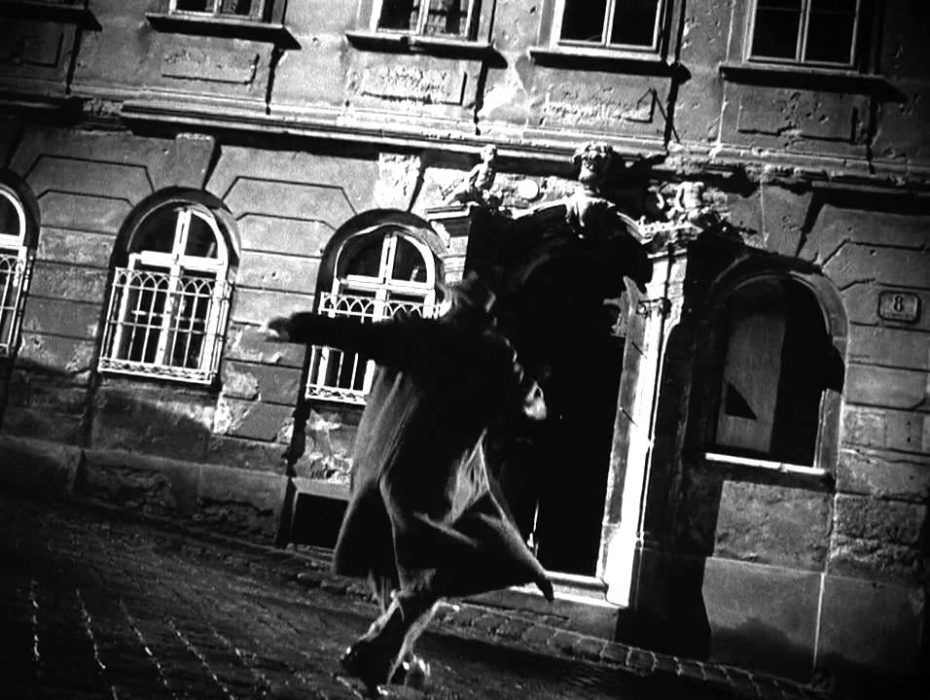
For one of his most famous roles, you’ll notice that Orson Welles is hardly in it. His first appearance in The Third Man is one of the great cinematic reveals, courtesy of a meowing cat and harsh apartment light, hiding in a doorway, which you can find on Schreyvogelgasse 8.
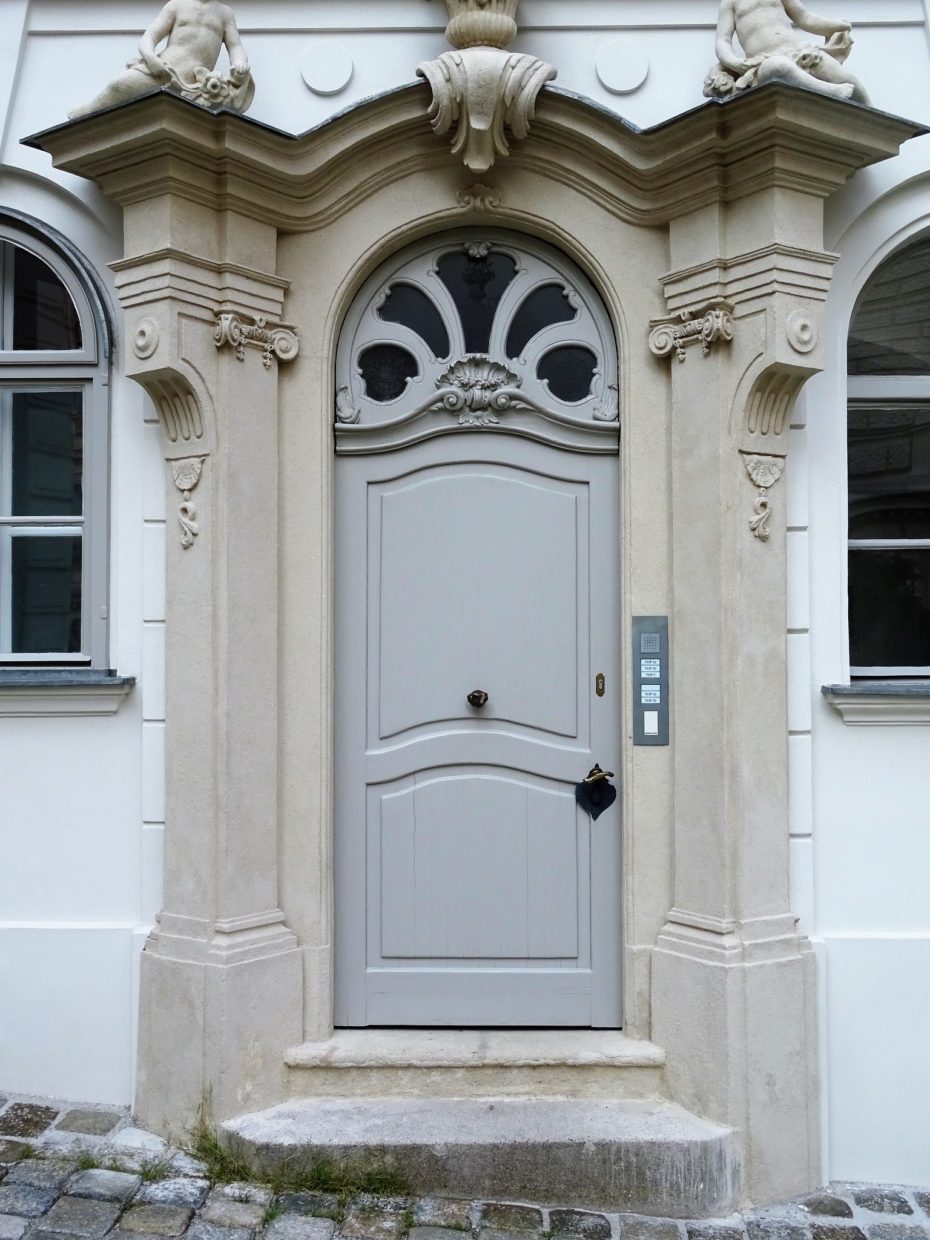
The Sewers
The setting for the film’s dramatic final chase scenes, Vienna’s ‘cholera sewers’ were built in the 1830s. Legend has it that Orson Welles found the stench of the sewers so awful, a body double was used for many of the wide shots.
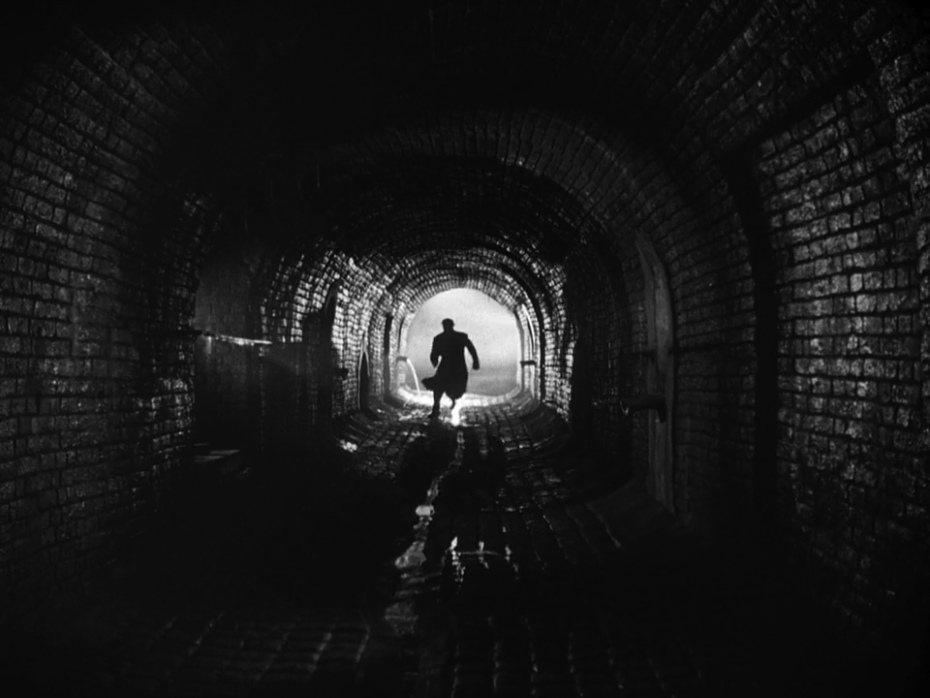
Today it’s actually possible to descend down beneath the streets of Vienna to explore the old tunnels with the Dritteman Tour Company.
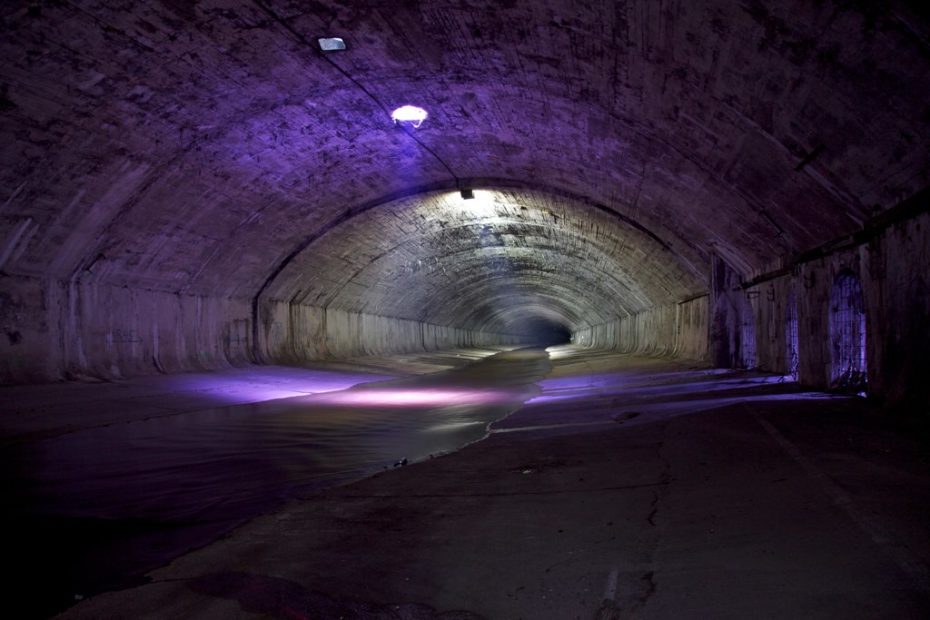
Prater Park
Our final stop is at one of Vienna’s most famous landmarks and also its most fun. The giant ferris wheel, the Wiener Riesenrad, can be found in one of Europe’s oldest amusement parks. Prater Park was created in 1766, when Emperor Joseph II gave up one his hunting grounds to become a public fun fair.
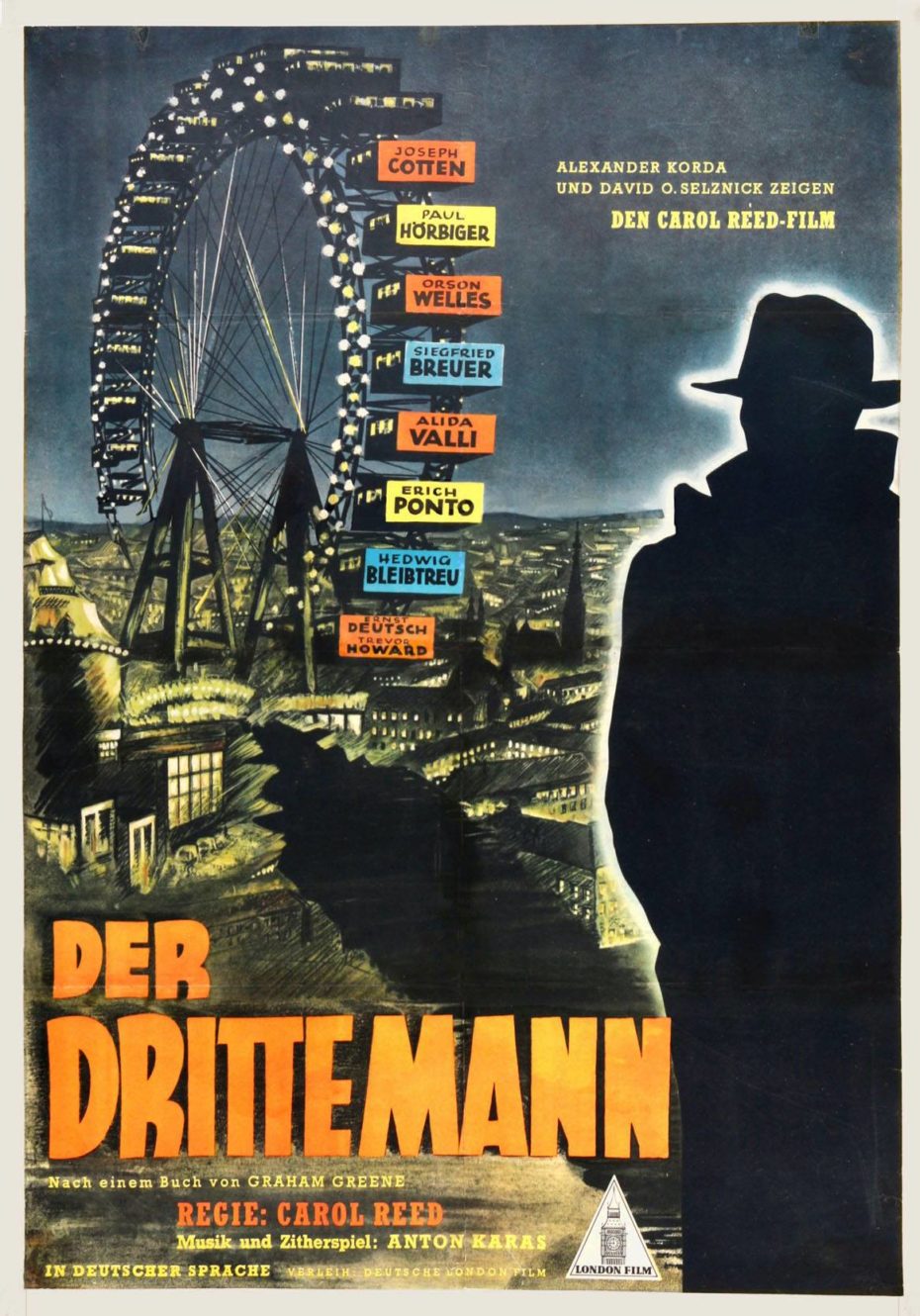
The ferris wheel dates back to 1897, and for many years, was the world’s largest. The ride, with its distinctive red gondolas looks much as it did in the film, when Holly Martins confronts Harry Lime over the deaths of all the children he caused with his doctored black market penicillin.
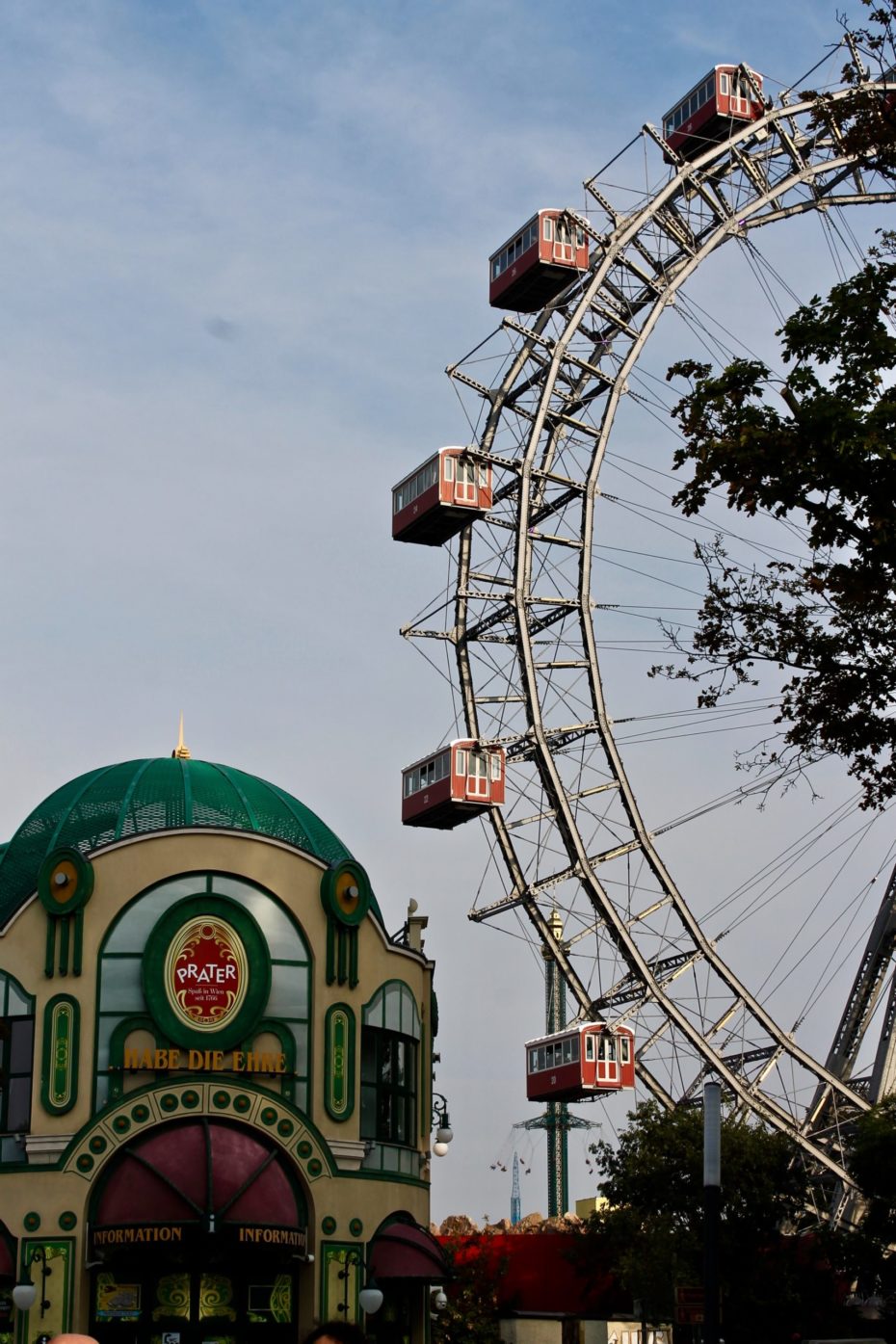
Its where Orson Welles delivers one of his most iconic lines, supposedly written by Welles himself:
“You know what the fellow said – in Italy, for thirty years under the Borgias, they had warfare, terror, murder and blood-shed, but they produced Michelangelo, Leonardo da Vinci, and the Renaissance. In Switzerland, they had brotherly love; they had five hundred years of democracy and peace – and what did that produce? The cuckoo clock.”
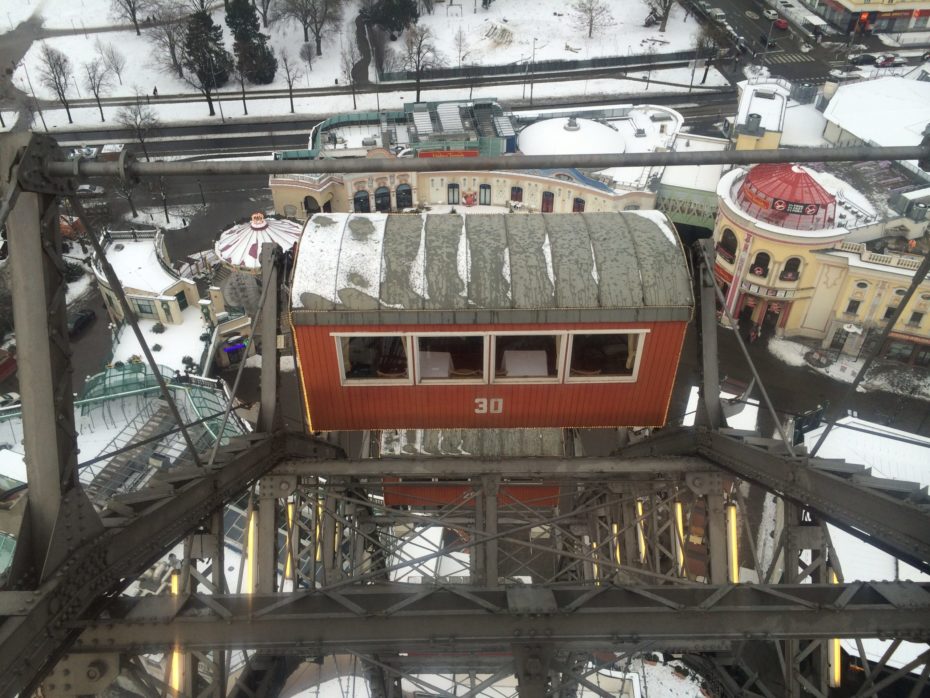
The Cemetery
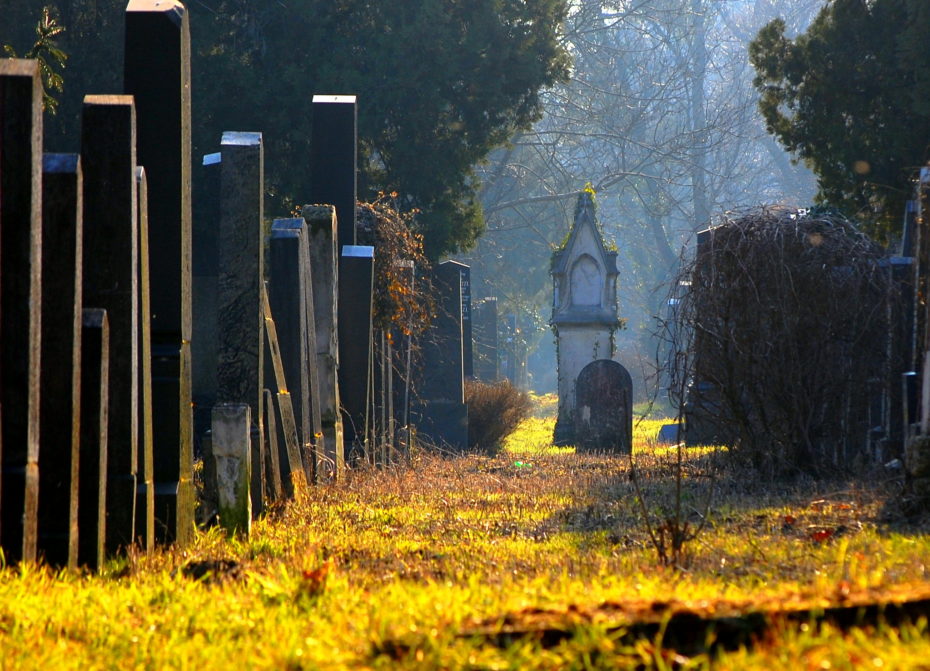
If you have time, head to the outskirts of the city to Simmering, where you’ll find Vienna’s famous Zentralfriedhof, one of the largest cemeteries in the world, and the setting for two scenes in The Third Man, most notably the famous last one when the jeep is passing Anna.. Like Holly Martins, you won’t find Harry Lime, but you will come across the final resting places of Beethoven, Strauss, Brahms and Schubert. As the local Viennese joke goes, “its half the size of Zurich, but twice as much fun.”
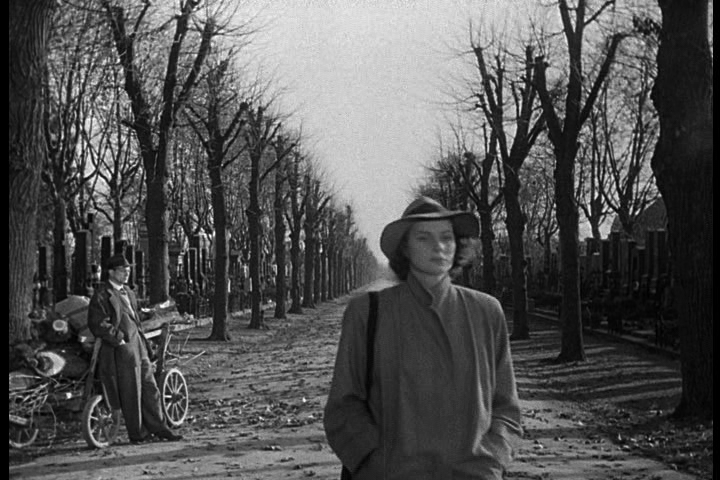
So concludes our journey around one of Europe’s most beautiful cities, which looks much as it did when Graham Greene and Carol Reed set of to explore Vienna over seventy years ago, creating one of Britain’s greatest ever films in the process.


